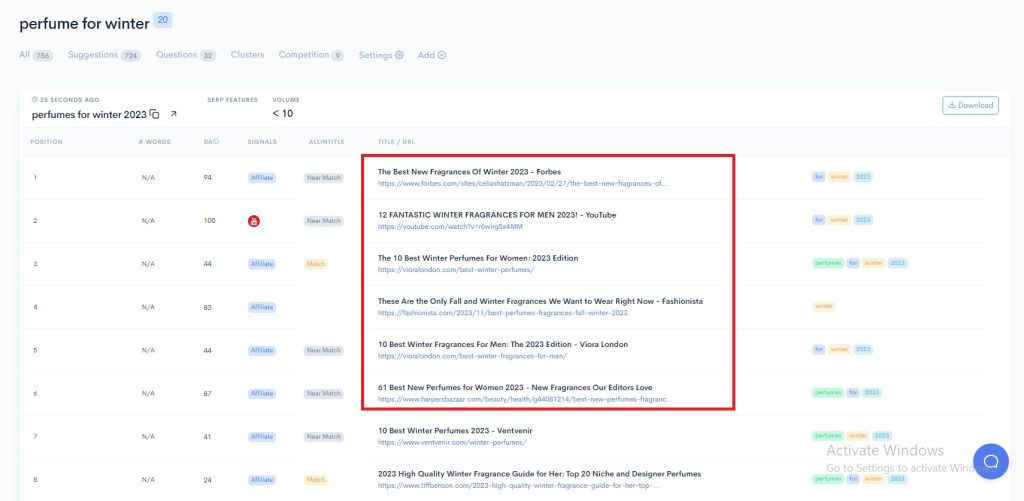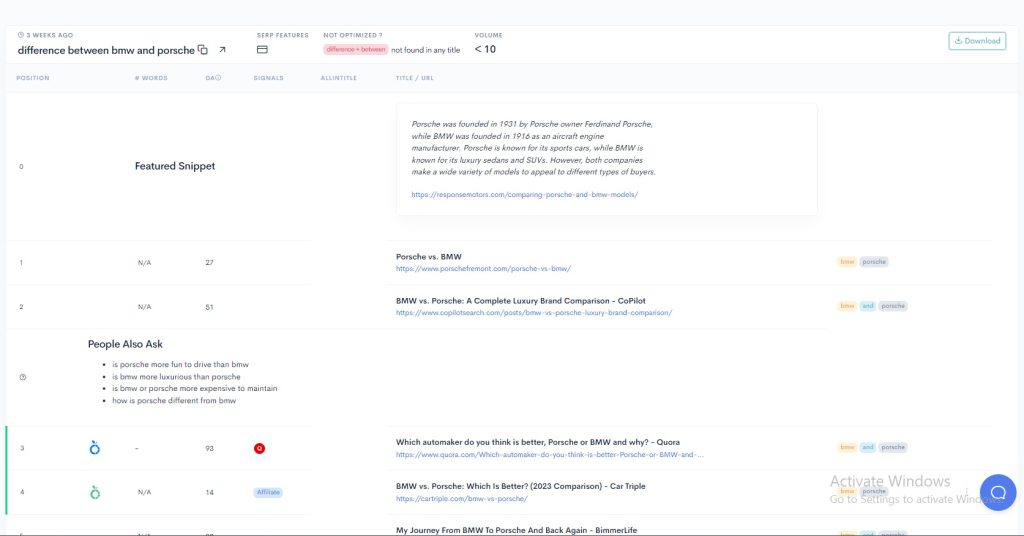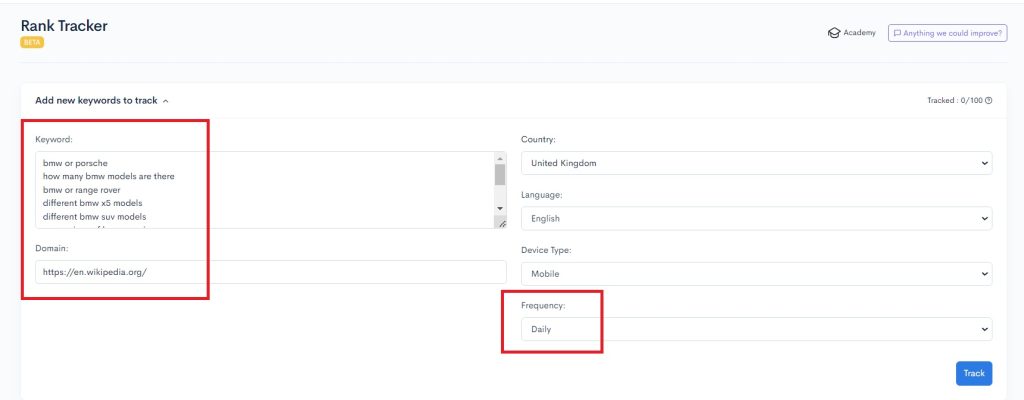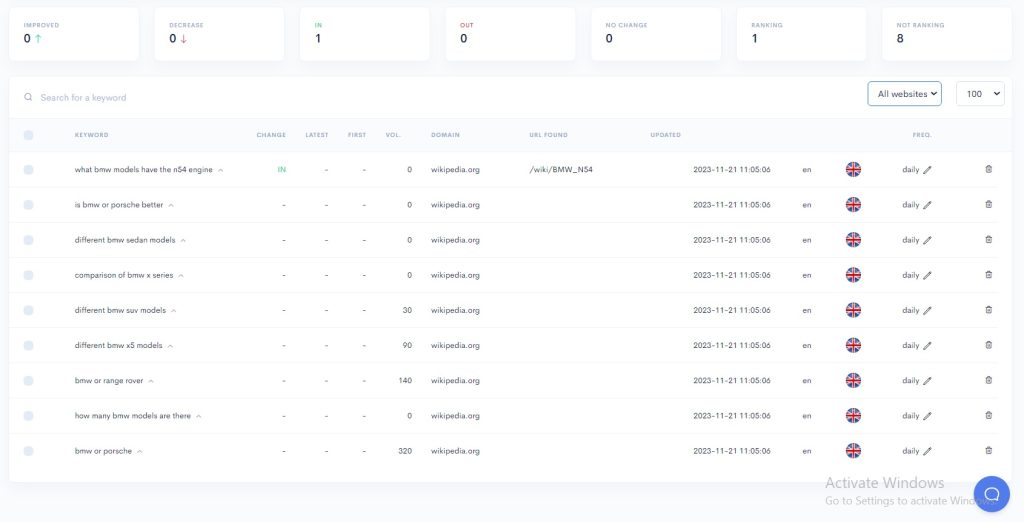What To Do After Keyword Research? 4 Steps To Put Your Keywords To Use
Georgi Todorov

So you’ve managed to build a keyword list but now you are not sure of the next steps?
Keyword research is just a part of the story – you still need to go on and put these keywords to use.
In this article, we will go over what to do after the keyword research process.
It’s my personal 4-step process of turning a keyword list into an action plan.
Step #1: Analyze the SERPs
Even if you found easy keywords, it doesn’t mean that ranking for them will be easy.
You’ll need to analyze the SERPs of the keywords to find bonus information about them that you will need.
1. Check the dominant content type
Do not write an article where a sales page is needed and vice versa.
Let’s say that you found the keyword ”perfumes for winter 2023”.
Before creating a sales page for it, or a category page outlining the different perfumes for winter, you should check the SERPs.

We find out that the dominant content type for the query is a listicle format, outlining the different options.
You can do that process manually or in LowFruits where you can get bonus insights.
Make sure to check the dominant content type for each keyword and make notes of it.
2. Check out which keywords do not have an AllInTitle on 1st page
A way to prioritize your keyword list is by looking at which keywords do not have an AllInTitle ranking on 1st page.

That means your competitors ranked for the query as a secondary keyword or a closely related one.
In the example above, we can see that no one has optimized for the target keyword in the title, but they have optimized around ”Porsche vs. BMW”.
With LowFruits, you can analyze the AllInTitle (top 10 results) in bulk for your whole keyword list.

3. Check the word count of the top 3 results
Before you write an article, you need to estimate the word count you need to produce.
To do that, you need to look at how many words have the top results on Google written on the topic in order to get an estimate:

Step #2: Cluster the keywords to see if you need unique articles
Some keywords should be targeted in the same article, and others on separate articles.
Do not write 2 articles on ”footwear manufacturer” and ”shoes manufacturer” if they return the same SERPs.
You can check for that for your keyword list in bulk inside LowFruis’ SERP clustering tool:

The tool shows you which keywords need to be targeted in the same article, and which ones are in separate articles based on their SERP results.
Step #3: Do a keyword mapping to URLs
It’s not always the case of creating new content. Sometimes we need to optimize existing content with the keywords we found.
Now that we have the previous info from the previous steps, it’s a step to map the keywords:

We can map 4 of these keywords to 2 existing articles, but the other 6 require new content.
This is how our keyword list should look in the end.
You could also add:
- Keyword group – if you are writing about both BMW and Mercedes
- Proposed title for the articles
- Other keyword metrics, such as weak domains on 1st page for prioritization purposes
Step #4: Set up keyword tracking
The last step is to set up keyword tracking.
This will allow us to track the positions of the keywords and be able to:
- Build reports for our stakeholders
- Come up with action plans on which keyword rankings need to be improved
- Get an overview of our current standings in the industry for the topics
Add your keywords to LowFruits’ Rank Tracker:

Make sure to enable daily frequency, as that would allow you to keep up to date with the latest ranking shifts for the day.
Inside, you will get an overview of the keywords positions and if they have improved or declined:

Conclusion & Key Takeaways: Post Keyword Research Steps
It’d have been lovely if SEOs could just produce a keyword list of a few hundred terms and then submit them to Google.
Unfortunately, this is not how SEO works, and we need to be very diligent in using the keyword list we have at hand.
It includes a process of doubling down:
- What is the dominant content type?
- What is the average word count?
- Has the keyword been optimized in the competitor titles?
After that, we need to map the keywords to existing URLs or produce new content.
And the cherry on top – track our progress by putting our keywords into a rank tracker tool like LowFruits.